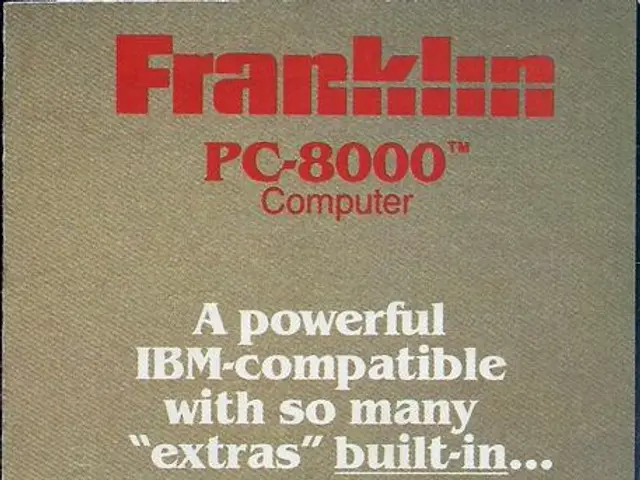Expansive Interview: Unveiling Plume's Ambitious Strategy to Expand Tokenized Real Estate Market to a Staggering $4 Trillion by 2035
The world of real estate is stepping into the future, with tokenization becoming a serious infrastructure player rather than just a niche experiment. According to Deloitte, the tokenized real estate market is on track to reach a whopping $4 trillion by 2035, a mere fraction of the $658 trillion global real estate industry.
The appeal of tokenizing real estate lies in the modernization of ownership tracking, asset access, and capital flow since blockchain technology can streamline these processes. Plume Network is one of the organizations working on the foundational layer that could make tokenized real estate—and other real-world assets—scalable, compliant, and accessible.
To unravel the secrets behind Plume Network's plans, I chatted with co-founder Teddy Pornprinya. In our conversation, he discusses the challenges of cross-chain interoperability, regulatory complexity, and user trust, while explaining how Plume is building for both institutional adoption and retail access.
Q: Is Plume's infrastructure ready to scale for the level of asset tokenization predicted by Deloitte (i.e., $4 trillion by 2035)? Could you comment on some of the technical hurdles (e.g., latency, network capacity, throughput) you face and how you plan to address them to become an institutional-grade platform at such volumes?
Teddy Pornprinya: Our goal with Plume Arc is to support such huge volumes. We've built compliance-first infrastructure that works closely with licensed partners for on/off-chain workflows. These partnerships provide jurisdictional flexibility, ensuring that assets originating from various locations are onboarded in a lawful manner.
The Plume Network already supports institutional-grade products like BlackRock, Blackstone, and Pimco REITs through our Nest application. Moreover, we're actively collaborating with institutional partners in New York, including Apollo. We believe our infrastructure is already primed to scale alongside increasing demand.
Q: Deloitte breaks down the tokenized real estate market into three segments: private real estate funds, tokenized loans/securitizations, and tokenized undeveloped projects. Which of these areas is Plume Network focusing on first, and how does that choice shape your product roadmap for the next few years? Do you plan to eventually cover all these segments (or even expand to other asset classes), and if so, how will you sequence these expansions?
TP: Plume is designed to support a wide variety of real-world assets, encompassing private real estate funds, tokenized loans, securitizations, and underdeveloped projects. The adaptability of our system allows us to work with projects at any stage, from conception to full market readiness.
For example, we helped a private equity fund in Texas tokenize its mineral assets—a traditionally offline segment. For more developed players, we focus on scaling distribution. Our end-to-end model includes support for token creation, compliance, access to liquidity, and market presence.
Q: To achieve interoperability across protocols, how will Plume Network enable cross-chain interoperability for tokenized assets? Will your platform be blockchain-agnostic, allowing tokens to move and trade freely across different networks?
TP: Absolutely, our approach is to make Plume blockchain-agnostic. Our Skylink product, built in tandem with LayerZero, allows us to originate yields and assets on Plume and create representations of those assets on other chains like Solana, Sui, and Injective.
With Skylink, users on other blockchains don't need to interact directly with Plume or navigate complicated bridges. They can simply deposit stablecoins into local vaults, and we manage the backend processes, including tokenization and eventual redemption back to the user's preferred chain. This creates a smooth omnichain RWA experience, unlocking new possibilities across blockchain ecosystems.
Q: Real estate trust deeds that embed legal contracts into blockchain tokens have gained attention. How are Plume Networks incorporating real-time compliance and legal enforcement into its platform design? For instance, can your smart contracts automatically enforce KYC/AML checks, investor accreditation limits, and jurisdiction-specific regulations with each transaction?
TP: Indeed, real-time compliance is critical to our institutional strategy. We've integrated compliance mechanisms directly into our smart contracts and token standards. Depending on the asset type and regulatory requirements, we support both ERC-20 and ERC-3643 token standards.
This ensures that compliance is maintained not just during onboarding but continuously across every transaction or transfer, providing the security and auditability that institutions require.
Q: To differentiate itself in the burgeoning tokenized real estate market, how does Plume Network plan to stand out against both crypto-native platforms and traditional asset managers who are also seeking to tokenize assets?
TP: Rather than competing with them, we often act as an enabler. Traditional asset managers and crypto-native protocols come to us for distribution and infrastructure. Our complete suite includes compliant onboarding, asset issuance, liquidity sourcing, and access to our network of users.
Where we truly excel is in our ability to merge on-chain execution with institutional-grade compliance and go-to-market capabilities. We help bring assets on-chain and help them find a market through community engagement, token design, and narrative-building—things that neither incumbents nor DeFi-native platforms typically do well.
Q: While tokenization promises to democratize investment, retail participation in real estate has traditionally been limited. What do you see as the main friction points preventing everyday investors from embracing tokenized assets (e.g., knowledge gaps, regulatory hurdles, or user experience issues)? How is Plume Network working to mitigate these frictions for retail investors while catering to the needs of large institutional participants?
TP: Education remains the primary barrier. Many retail investors lack a thorough understanding of what they're investing in, particularly with regard to real-world assets, which are inherently complex. As the speculative trading era cools and more users lean toward fundamental-based investments, there's growing appetite for real-world asset exposure.
We've also developed a product named Nest that addresses the KYC hurdle for non-U.S. retail users. Nest lets users deposit into a Marshall Islands-registered vault managed by a KYB-compliant entity. This entity acquires institutional assets and issues tokens representing the owners' interests. This structure allows retail users to acquire real-world assets without breaching jurisdictional restrictions.
Q: With potentially trillions of dollars in assets being tokenized over the next decade, secure custody is a crucial concern. One solution could be holding property in a neutral third-party trust until obligations are met, emphasizing the importance of investor protections. How is Plume addressing custody and security for tokenized assets on your network? Do you need to partner with established custodians or can you develop in-house solutions to ensure a sense of security for both institutional and retail investors?
TP: Yes, we are partnering with well-established custodians like Anchorage and Fireblocks to ensure the highest level of asset security. Our partnerships denote the utmost importance of safety when it comes to funds and assets.
- Teddy Pornprinya, co-founder of Plume Network, discusses the plans for scaling their infrastructure to support the predicted $4 trillion tokenized real estate market by 2035.
- Plume Network is aimed at supporting a wide variety of real-world assets, including private real estate funds, tokenized loans, securitizations, and underdeveloped projects.
- Plume Network's Skylink product allows for cross-chain interoperability, creating a smooth omnichain Real-World Asset (RWA) experience across blockchain ecosystems.
- Compliance mechanisms are directly integrated into Plume Network's smart contracts to ensure continuous compliance across every transaction, providing the security and auditability that institutions require.
- Plume Network acts as an enabler for traditional asset managers and crypto-native protocols, offering a complete suite that includes compliant onboarding, asset issuance, liquidity sourcing, and access to their network of users.
- Education remains the main barrier for retail investors embracing tokenized assets, and Plume Network has developed a product named Nest to help mitigate this friction by providing a KYC compliant solution for non-U.S. retail users.
- Plume Network is partnering with well-established custodians like Anchorage and Fireblocks to ensure the highest level of asset security, emphasizing the importance of safety for both institutional and retail investors.
- The Plume Arc infrastructure works closely with licensed partners for on/off-chain workflows, providing jurisdictional flexibility and ensuring that assets originating from various locations are onboarded in a lawful manner.




